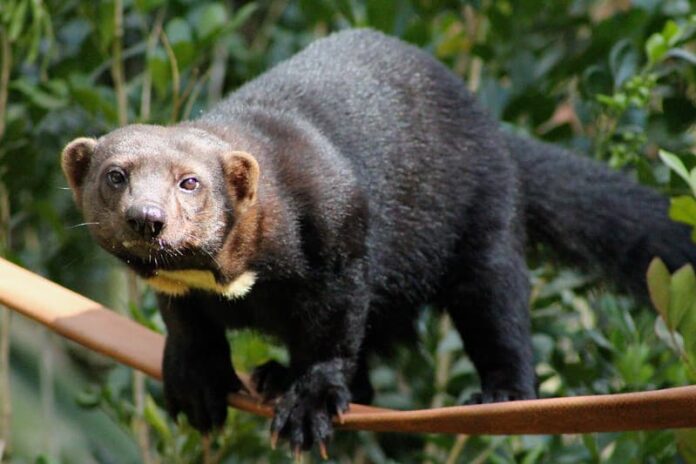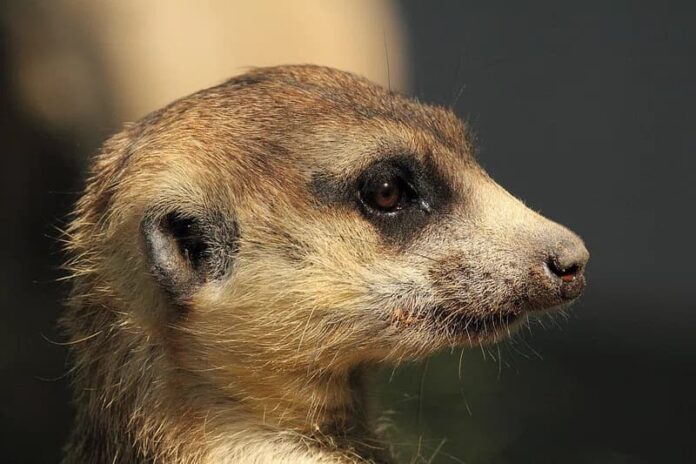Kinkajou, have you ever heard of this animal before? Kinkajou also goes by the name honey bear while it has zero relations with a bear at all. Its name actually derived from the Native American word “Quincajou” which originally means “wolverine” due to its resemblance with that animal. As always, you are going to see some fascinating information about this unique creature with me below. Maybe you have never heard of them before, but that is going to change now. So let’s take a look and find out more about kinkajou with me today.
1Appearance

Looking like a monkey, kinkajous are actually the closest relatives to raccoons. A kinkajou has large eyes that are highly reflective of light in a small round face. It has soft fur that is either brownish or gray in color for the undercoat and gold for the outer coat. Another thing that you notice right away apart from their eyes is the cute little round ears on their head. Those adorable ears are not just for show because kinkajous have an extremely sharp hearing. Their hearing is so accurate they can detect even the movement of a snake nearby. Kinkajous also have sharp teeth that help them to eat and possibly protect themselves from predators.
The special thing about kinkajous is that they are able to fully rotate their feet 180 degrees. This allows them to run in either direction along the branches or up and down the trunks. Simply put, a kinkajou can run backward as quickly as they run forward which is amazing. On top of that, they have a prehensile tail that functions as another arm that can grip onto branches. This is why it is common to see them hanging from the tree branch by their amazing and strong tail. Kinkajous also snug in their tail to provide more comfort, a sense of protection, and warmth when they sleep. Because they have flexible spines, kinkajous are able to curl into tight spots when sleeping.
2Behavior

Kinkajous are very social animals, and they form treetop groups to share social interactions with each other. During those times, kinkajous groom, play, and sometimes they sleep together. A typical kinkajou social group includes 2 males and a female with her offspring. They can be quite noisy due to the barks, high-pitched squeaks, and hisses that they make. Outside the social moments, kinkajous spend most of their time alone and they are territorial animals. Kinkajous mark their territory by using scent glands from their abdomen and at the corner of their mouth and throat. These animals stick to their own territory, and they usually travel the same route each night.
As nocturnal animals, kinkajous roam and eat at night before they return to sleep in the morning. In Belize, people called them “night walkers” because they are most active when the sun goes down. During the day, kinkajous find a crook or hollow in a tree to hide or sleep in. Without using a proper hideout, predators might find and eat them during their sleeping time. Sometimes they use the same spot while other times they go for a new one in each morning. When the day gets too hot, the kinkajous expose their belly and bare-skinned palms to catch a cooling breeze. Kinkajou are docile and easy-going around people, but they can lash out if agitated or disturbed.
3Feeding & Habitats

With the reputation of raiding bee nests, kinkajous also go by the name of honey bears. These adorable mammals use their long skinny tongue to slurp honey from a beehive or move insects from their nests. Apart from these, kinkajous also feed on fruit (particularly figs) and small mammals that they can find. Sometimes they also eat eggs, hatchlings, insects, and small vertebrates that they come across. Kinkajous are important pollinators because they also drink nectar from flowers, and they move around a lot. And they get their water from their food or the water that is gathered on leaves, so coming to the ground is not necessary.
Kinkajous live in the tropical rainforests of Central and South America where they spend most of their time in trees. Thanks to the dense and wooly fur, it helps to keep them dry against the constant rainfall. Besides rainforests, kinkajous also live in coastal forests, dry forests, and evergreen forests in the same location. Where they live, kinkajous travel from tree to tree via overlapping branches rather than coming down. In fact, they rarely leave the treetops to come down to the ground so it is difficult to study them.
4Predators & Threat
The main predators of kinkajous are foxes, harper eagles, jaguars, margays, ocelots, and tayras. Since they are fast and flexible, their natural predators are not important threats to their lives. Kinkajous are more vulnerable to hunters and poachers who seek them for various purposes. These mammals are not endangered, but they face some threats such as hunting and poaching. People hunt them for fur and meat, and people also capture them for the exotic pet trade. It is true that they look cute, but these animals are not good pets because they are from the wild. They can inflict a painful bite and they can be destructive to a home in the middle of the night. Another main threat is deforestation which is also a big problem for their population.
Related Post: Things You Don’t Know About Sea Urchin




